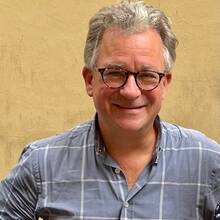[ROME] There's been some debate in the Vatican press office about whether Pope Benedict will make the announcement of a 20 November consistory to create more cardinals tomorrow, or after the end of the Synod Sunday. In his blog tonight the vaticanista Andrea Tornielli seems certain it'll be tomorrow, after the general audience.
The consistory will be the third of his pontificate (the last two were February 2006 and November 2007), and is expected to result in at least 19 new red hats, bringing the College of Cardinals to 120. 
Tornielli is guessing that the curial appointments will be:
(Italians) Angelo Amato, Prefect of the Congregation for the Causes of Saints; Mauro Piacenza, Prefect of the Congregation for the Clergy; Fortunato Baldelli, Major Penitentiary of the Apostolic Penitentiary (one of the three tribunals, responsible for lifting excommunications); Velasio De Paolis, President of the Prefecture for the Holy See's economic affairs; Paolo Sardi, head of the Order of Malta; Francesco Monterisi, Archpriest of the Basilica of St Paul's; Gianfranco Ravasi, President of the Vatican's Council for Culture. (Non-Italians) Raymond Burke (US), Prefect of the Apostolic Signatura (the Vatican court); Kurt Koch (Switzerland), President of the Council for Christian Unity; and Robert Sarah (Guinea Conakry), President of the Vatican's global development agency, Cor Unum.
As for heads of dioceses, Tornielli is plumping for: Bavaria, Germany (Reinhard Marx), Warsaw, Poland (Kazimiercz Nycz), Washington (Donald W Wuerl); Kinshasa, DR Congo (Laurent Monsengwo Pasinya); Colombo, Sri Lanka (Malcolm Ranjith Patabendinge Don), Aparecida, Brazil (Raymundo Damasceno Assis), Toronto, Canada (Thomas Collins), Alexandria, Egypt (Coptic Patriarch Antonio Naguib).
New York and Westminster would not get red hats, the thinking goes here, because in both cases there is a voting-age cardinal in the diocese. The same is true of other cardinal sees: Rio de Janeiro, Toledo, Brussels and Utrecht.
Of course, these predictions make certain assumptions -- for example, that Pope Benedict will continue to be rigorous in maintaining the upper limit of 120; or that he doesn't want more than one voting-age cardinal in a diocese. He could, of course, surprise us.
And it's not long before we find out.







